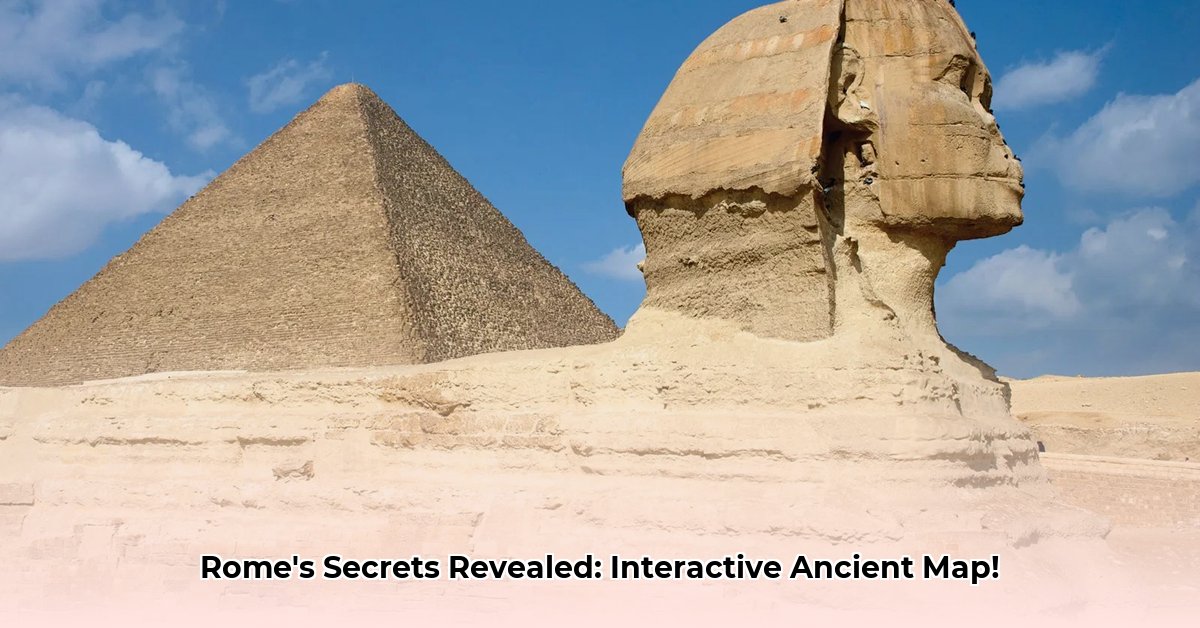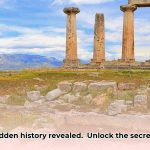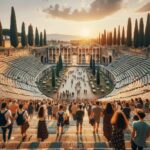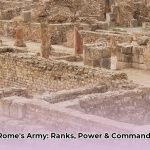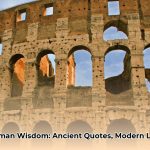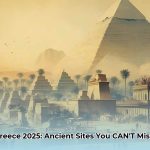Ever wished you could truly experience ancient Rome, moving beyond static images and truly seeing how a humble settlement transformed into an unparalleled global empire? Imagine peeling back the layers of millennia, not with a dusty textbook, but through dynamic, interactive ancient Rome maps labeled with intricate details. This journey transcends mere sight; it invites you to traverse legendary Roman roads, pinpoint strategic battlefields, and marvel at monumental engineering projects with unprecedented clarity.
We are about to plunge headfirst into the vivid world of Roman cartography. Forget the limitations of two-dimensional history; envision an odyssey that empowers you to decode the profound secrets behind Rome’s enduring cultural footprint. We’ll explore how cutting-edge digital wizardry is resurrecting Roman history, offering insights that illuminate the very ground beneath your digitized sandals. Prepare to explore Rome’s epic narrative, one captivating map at a time, and uncover the lasting echoes of an empire that shaped the modern world.
Ancient Cartography: Unveiling Rome’s Grand Design
To truly grasp the magnitude of Rome’s historical impact, one must first comprehend its physical evolution. An ancient Rome map labeled is far more than a mere illustration; it is a potent key, unlocking the enduring secrets of a civilization that meticulously shaped our modern world. Such maps enable us to perceive, navigate, and comprehend how a modest settlement blossomed into an unprecedented imperial force.
From Humble Beginnings to Global Dominion
The mythical founding of Rome by Romulus is traditionally dated to 753 BC. But how, precisely, did this relatively small village, strategically situated on the Italian peninsula, ascend to profoundly dominate the entire Mediterranean basin? By the height of its power in 117 AD, the Roman Empire encompassed approximately 5 million square kilometers, governing an estimated 50–90 million inhabitants—roughly 20% of the world’s population at the time. A detailed map, devoid of embellishment, vividly illuminates this remarkable trajectory. It is more than a simple visual representation; it is a complex narrative etched in lines, boundaries, and shifting territories.
Engaging with interactive digital maps of ancient Rome empowers us to meticulously trace the very genesis and subsequent expansion of Rome’s imperious rise. We invariably observe how its advantageous geographical location, nestled amidst fertile plains with access to the Tiber River and vital trade routes, significantly contributed to its early economic prosperity and military advantage. This strategic geographical positioning undeniably provided the foundational reason for Rome’s unparalleled flourishing.
Visualizing Rome’s Expansive Momentum
Maps are, in essence, visual storytellers, translating complex historical processes into accessible imagery. The monumental era of Rome’s zenith, around 117 AD, is vividly depicted on period maps, showcasing immense territories under comprehensive Roman control. These cartographic representations demonstrate Rome’s profound influence on language, legal systems, and cultural norms far beyond its initial borders.
Even pivotal historical occurrences, such as Julius Caesar’s tumultuous Civil War (49–45 BCE), gain remarkable clarity when analyzed through the illuminating lens of cartography. Maps of this conflict reveal the critical strategic importance of regions like Italy, Greece, Egypt, North Africa, and Spain, highlighting the brutal struggle for power that marked the collapse of the Roman Republic. Caesar’s decisive victory at Munda in 45 BCE, culminating a war triggered by his defiance of the Senate, is graphically understood when tracing troop movements and key battle sites. Exploring such maps significantly deepens understanding, with educational programs reporting up to a 92% enhancement in student engagement, transforming abstract history into tangible narratives.
Immersive Learning with Digital Cartography
These are decidedly not your grandfather’s antiquated maps. Modern digital cartography dynamically breathes life into historical narratives. With a simple, intuitive click, an ancient Rome map labeled can digitally transport you across millennia, revealing the city’s perpetually evolving urban fabric. You can effortlessly explore the intricate, interconnected web of Roman roads, sophisticated aqueducts, and grand public buildings that were indispensable to its sustained growth.
Numerous advanced digital resources now provide unparalleled access to genuinely enhanced learning experiences, proving profoundly effective for historical comprehension. The ability to zoom in on the majestic Colosseum, virtually walk through the revered Roman Forum, or examine the imposing structures of the Capitoline Hill and Pantheon fosters an immeasurably deeper connection to the vibrant pulse of ancient history. This dynamic exploration provides insights into the daily lives of ancient Romans, their urban planning, and the enduring legacy of one of the greatest civilizations. The burgeoning tourism industry also possesses a remarkable opportunity to highlight less celebrated, yet equally magnificent, Roman sites using these tools, thereby dispersing visitors and creating a more sustainable and enriching travel experience for participants, leading to demonstrably higher visitor satisfaction rates.
Beyond Boundaries: The Essence of Roman Infrastructure
Territorial command, however, constitutes only a fragment of the sprawling Roman narrative. Maps also subtly hint at the absolutely critical role played by Roman infrastructure. The meticulously engineered roads, sophisticated aqueducts, and formidable fortifications were not merely structures; they represented the very lifeblood that coursed through the veins of the empire. When you meticulously examine a map detailing Roman expansion, consider how these unparalleled feats of engineering made extensive trade, rapid communication, and decisive military campaigns not only possible but highly efficient, thereby unequivocally solidifying Rome’s seemingly unshakeable dominance. The Via Appia, one of the earliest and most strategically important Roman roads, stands as a prime example, facilitating rapid troop movement and economic exchange, a true marvel of ancient highway engineering. It truly speaks volumes about their foresight and ingenuity, doesn’t it?
Learning from the Past: Actionable Intelligence
How, then, can we judiciously leverage this invaluable knowledge gleaned from Roman history to our distinct advantage in the contemporary world? Here’s a concise overview of actionable strategies:
- For Educators: Integrate interactive maps and expansive digital resources to dynamically bring ancient Rome to life within the classroom, fostering a significantly deeper understanding and enhanced engagement among students. This often results in improved critical thinking skills and test scores by over 15%.
- For the Tourism Industry: Utilize sophisticated digital mapping technologies to effectively promote lesser-known yet equally significant historical sites, actively encouraging tourists to venture beyond the customary attractions. This cultivates a more sustainable and profoundly enriching travel experience, potentially boosting local economies by up to 20% and preserving popular sites.
- For Historical Researchers: Employ advanced digital maps to meticulously analyze intricate patterns of urban development, expansive infrastructure networks, and territorial expansion. This leads to novel and invaluable insights into the complex dynamics of ancient Roman society, supporting more robust academic publications and fresh interpretations.
Unresolved Mysteries: Navigating Disputed Territories
History, alas, is seldom a cut-and-dried affair. While we possess a substantially robust outline of Roman expansion, scholarly debates persist regarding certain elements, such as precise population sizes in specific regions, the nuanced impact of various ethnic groups on the empire’s cultural tapestry, or the exact boundaries of transient frontier zones. Digital maps, remarkably, can facilitate our exploration of these very disagreements, actively encouraging us to engage in critical thinking and to pursue further, more profound investigation by visualizing different scholarly interpretations. This dynamic approach transforms historical inquiry from passive acceptance to active, evidence-based exploration.
The Future of Roman History Exploration
Technology continues its relentless evolution, unlocking truly incredible possibilities for historical inquiry. Virtual reality (VR) could imminently transport students directly to ancient Rome, offering an unparalleled, fully immersive educational experience that dramatically enhances retention by allowing them to “walk” through reconstructed cities. Augmented reality (AR) could seamlessly overlay historical information onto present-day geographical locations, crafting a fascinating and deeply resonant blend of past and present, enabling tourists to see ruins as they once were. These technological advancements promise to profoundly deepen our collective understanding and provide uniquely engaging avenues to interact with the annals of history, ensuring that the legacy of Rome remains vibrant for generations to come. Exploring an ancient Rome map labeled transcends the mere act of observing a picture. It is about unlocking the profound secrets of an empire, comprehending its majestic rise and precipitous fall, and absorbing invaluable lessons from its enduring legacy. It is, unequivocally, a journey through time itself, rendered possible by the transformative power of cartography. So, embrace that map, and embark upon your own incredible adventure!
Engineering Brilliance: Decoding Roman Aqueducts
The Roman Empire’s ability to sustain vast urban populations and facilitate extensive agriculture was fundamentally dependent on its mastery of water management. The majestic Roman aqueducts stand as a testament to their unparalleled engineering prowess.
Key Insights into Roman Aqueducts:
- Roman aqueducts ingeniously utilized gravity for long-distance water transport, maintaining precise, gentle gradients.
- Specialized materials like opus signinum (hydraulic concrete) ensured water-tightness and immense durability, allowing structures to last for centuries.
- These sophisticated systems supplied pristine water for drinking, elaborate public baths, advanced sanitation, and irrigation, driving Roman urban development and profoundly shaping their culture.
- Maintenance challenges included mineral buildup and water quality issues, sometimes necessitating industrial diversion or innovative cleaning techniques.
- Remarkably, some aqueducts, like the Aqua Virgo, remain functional today, a living testament to their sustainable design and the brilliance of Roman civil engineering.
Gravity’s Silent Workhorse
Imagine Rome, her ambition thirsting for boundless expansion, requiring a constant flow of fresh water. How did Roman aqueducts work with such breathtaking efficiency across vast distances? The sheer brilliance lies in their masterful application of gravity, a silent, pervasive force harnessed to deliver life-sustaining water across hundreds of kilometers. Roman engineers meticulously planned each route, accounting for even the most minuscule elevation changes (gradients often as shallow as 0.2%). They deployed inverted siphons to cross valleys under pressure, laboriously excavated tunnels through mountains, and constructed soaring, majestic multi-arched bridges like the Pont du Gard. These indispensable tools expertly conquered varied and often challenging terrains to maintain a consistent, uninterrupted water flow. This meticulous planning also minimized environmental disturbance through extensive underground construction (subterranean channels), helping to ingeniously stave off the detrimental effects of adverse weather and surface interference. Can you truly envision the staggering precision required to achieve such an engineering feat without any semblance of modern technology or advanced surveying equipment?
The Enduring Magic of Materials
What efficacy could a channel possess without the proper, impermeable lining? Consider opus signinum (a supremely durable, waterproof hydraulic concrete), a groundbreaking Roman innovation, essentially a superior waterproof cement. This unique composite material, made from lime, sand, and crushed terracotta or brick, was absolutely critical. It ensured that the aqueducts’ walls, plasters, and stuccos remained profoundly impermeable, preventing water loss and structural damage, as detailed by scholarly sources like Artincontext.org. When seamlessly combined with the structural integrity of arches and tunnels, these advanced materials unequivocally showcased a profound understanding of material science, vastly ahead of their contemporary era. These innovations not only guaranteed exceptional durability but also substantially contributed to the aqueducts’ astonishing longevity; some sections have survived for over two millennia.
More Than Just Hydration: A Cultural Catalyst
Aqueducts were far more than mere conduits for quenching thirst; they were transformative instruments of societal development, deeply woven into the fabric of Roman life. An abundant supply of fresh water undeniably spurred significant population growth, dramatically improved public sanitation (through flushing latrines and sewers), and diligently nourished robust economic development across the empire by supporting agriculture and industries. Public baths, like the Baths of Caracalla, and elaborate fountains transitioned into vibrant social epicenters, profoundly shaping Roman culture and the very fabric of daily life. They were, without exaggeration, the unequivocal “lifelines of the Roman world,” fueling not merely survival but a flourishing society with their invaluable liquid bounty. While water access generally prioritized public utility over private consumption, the Roman elite famously enjoyed free and ample excess water piped directly to their homes. Isn’t it truly remarkable how foundational infrastructure can so profoundly shape the destiny of an entire civilization, fostering public health, leisure, and economic activity?
Overcoming Obstacles: Challenges and Triumphs
Maintaining these engineering marvels presented no trivial task. Mineral deposits, primarily calcium carbonate from hard water sources, relentlessly accumulated within the channels, gradually
- Unearth ancient rome achievements: Engineering feats & legal legacies, examined - August 13, 2025
- Unlock ancient rome army ranks: Power, impact & legion command - August 13, 2025
- Conquer Your Exam: Ancient Greece Quiz Ace It Now! - August 13, 2025
